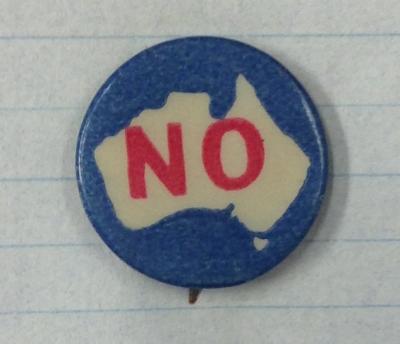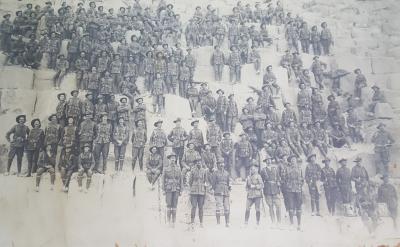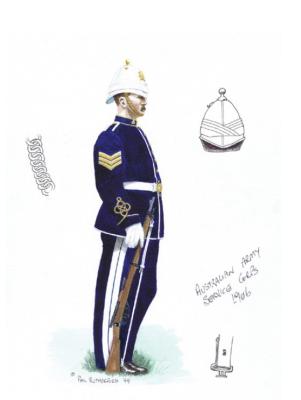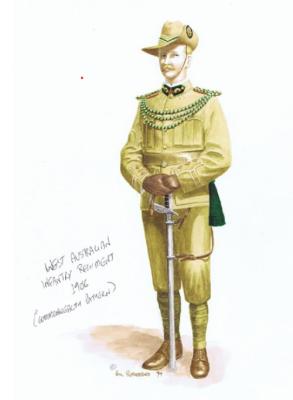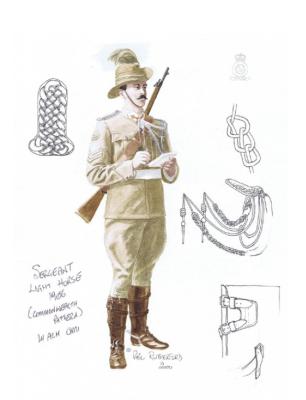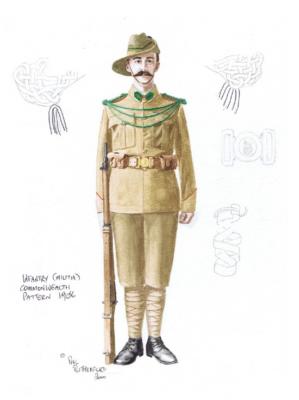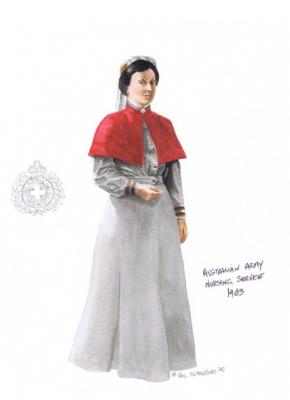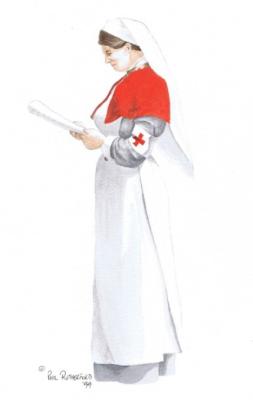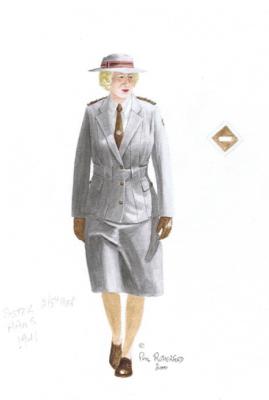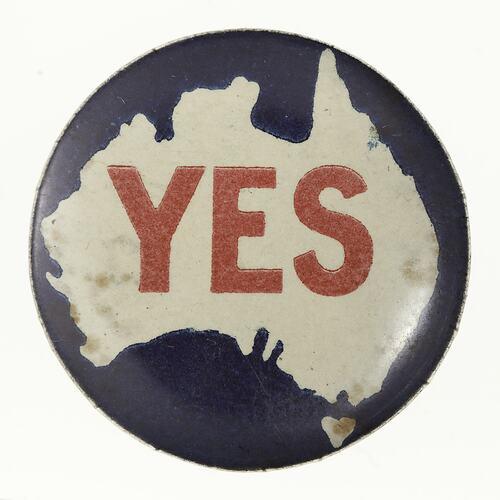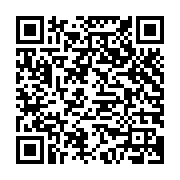World War 1, Australia, Home Front, Conscription Referenda, "Yes" Button
World War 1 celluloid tin button badge advocating a "Yes" vote in the 1916 Conscription Referendum.
The 1916 referendum
Australian troops fighting overseas in World War I enlisted voluntarily. As the enormity of Australian casualties became known and no quick end to the war seemed likely the number of men volunteering fell steadily. There was sustained British pressure on the Australian Government to ensure that its divisions were not depleted: in 1916 it was argued that Australia needed to provide reinforcements of 5500 men per month to maintain its forces overseas at operational level. With advertising campaigns not achieving recruiting targets, Prime Minister Hughes decided to ask the people in a referendum if they would agree to a proposal requiring men undergoing compulsory training to serve overseas. The referendum of 28 October 1916 asked Australians:
Are you in favour of the Government having, in this grave emergency, the same compulsory powers over citizens in regard to requiring their military service, for the term of this War, outside the Commonwealth, as it now has in regard to military service within the Commonwealth?
The referendum was defeated with 1,087,557 in favour and 1,160,033 against.
The 1917 referendum
In 1917 Britain sought a sixth Australian division for active service. Australia had to provide 7000 men per month to meet this request. Volunteer recruitment continued to lag and on 20 December 1917 Prime Minister Hughes put a second referendum to the Australian people. The referendum asked:
Are you in favour of the proposal of the Commonwealth Government for reinforcing the Commonwealth Forces overseas?’
Hughes’ proposal was that voluntary enlistment should continue, but that any shortfall would be met by compulsory reinforcements of single men, widowers, and divorcees without dependants between 20 and 44 years, who would be called up by ballot. The referendum was defeated with 1,015,159 in favour and 1,181,747 against.
The conscription referenda were divisive politically, socially and within religious circles. Newspapers and magazines of the time demonstrate the concerns, arguments, and the passion of Australians in debating this issue. The decisive defeat of the second referendum closed the issue of conscription for the remainder of the war.
Details
Details
The circular badges were most commonly produced with a printed paper design laminated between a tin base and celluloid cover. The button had metal back with a securing pin and attachment.
A display of Fund Raising and Patriotic Buttons features in the World War 1 Gallery during April and November at the Australian Army Museum of Western Australia.
Australian Army Museum of Western Australia
Australian Army Museum of Western Australia
More items like this
Other items from Australian Army Museum of Western Australia
- World War 1, Eastern Mediterranean, Egypt, Cheops Pyramid, 12 Battalion
- Honour Board - United and Ancient Order of Druids, Lodge 359
- World War 1, Honour Board, Municipality of North Fremantle.
- Post 1945, Western Australia, Honour Board, Commercial Traveller's Association
- World War 2, Western Australia, Dodge 3/4 Ton WC Series
- Pre 1914, Western Australia, Army Service Corps, 1906
- Pre 1914, Western Australia, Perth, West Australian Infantry Regiment, 1906
- Pre 1914, Western Australia, Light Horse, 1906
- Pre 1914, Western Australia, Militia Infantry, 1906
- Pre 1914, Australia, Australian Army Nursing Service, 1904
- World War 1, Australia, Australian Army Nursing Service, 1916
- World War 2, Australia, Australian Army Nursing Service, 1942
